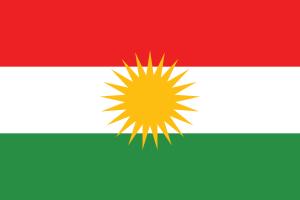Difference between revisions of "Language/Northern-kurdish/Culture/Cuisine"
m (Quick edit) |
m (Quick edit) |
||
| Line 68: | Line 68: | ||
[[Category:0-to-A1-Course]] | [[Category:0-to-A1-Course]] | ||
[[Category:Northern-kurdish-0-to-A1-Course]] | [[Category:Northern-kurdish-0-to-A1-Course]] | ||
==Related Lessons== | |||
* [[Language/Northern-kurdish/Culture/Tourist-Attractions|Tourist Attractions]] | |||
* [[Language/Northern-kurdish/Culture/Weddings-and-Celebrations|Weddings and Celebrations]] | |||
* [[Language/Northern-kurdish/Culture/Regions-and-Cities|Regions and Cities]] | |||
* [[Language/Northern-kurdish/Culture/Means-of-Transportation|Means of Transportation]] | |||
* [[Language/Northern-kurdish/Culture/Folklore|Folklore]] | |||
{{Northern-kurdish-Page-Bottom}} | {{Northern-kurdish-Page-Bottom}} | ||
Revision as of 21:55, 14 March 2023
As a Northern Kurdish language teacher, it's important to not only teach the language, but also the customs and traditions of the Northern Kurdish people. In this lesson, we'll explore the cuisine of the Northern Kurdish people.
Kurdish Cuisine
Kurdish cuisine is rich in flavor and history, with influences from Middle Eastern, Mediterranean, and Central Asian cuisines. It is known for its use of fresh herbs, spices, and vegetables.
Traditional Dishes
Here are some traditional Northern Kurdish dishes:
| Northern Kurdish | Pronunciation | English |
|---|---|---|
| براني پيشك | brani pîşk | Stuffed sheep stomach (similar to haggis) |
| دولمە | dûlmê | Stuffed grape leaves |
| شیشە برێك | şîşê berêk | Meat and vegetable pie |
Ingredients
Northern Kurdish cuisine utilizes a variety of ingredients that are unique to the region. Here are some common ingredients:
- Bulghur
- Chickpeas
- Eggplants
- Lamb
- Mint
- Pomegranate
- Sumac
Desserts
No meal is complete without dessert. Here are some traditional Northern Kurdish desserts:
- Baklava
- Fereni (rice pudding)
- Halva
- Kurdish cookies
Tea Culture
Tea is an important aspect of Northern Kurdish culture, and is often served after meals, during family gatherings, or when entertaining guests. Northern Kurdish tea is typically black tea brewed in a special teapot called a samovar. It is usually served with sugar and sometimes with a side of raisins or nuts.
Tips for Cooking Kurdish Cuisine
Trying out Northern Kurdish cuisine at home can be a great way to connect with the culture. Here are some tips to get started:
- Start with simple recipes and work your way up to more complex dishes.
- Use fresh herbs, spices, and vegetables for authentic Kurdish flavors.
- Experiment with ingredients that are unique to the region, like sumac and pomegranate.
- Don't be afraid to ask for help or advice from local Northern Kurdish communities or online resources.
Learning about the cuisine of the Northern Kurdish people is a great way to deepen your understanding of their culture. By incorporating traditional dishes and ingredients into your cooking, you can also connect with this culture on a more personal level.
